Posted on Aug 08, 2018
12 Character Archetypes Every Writer Must Know
‘Character archetypes’ are something you imagine bohemian writers talking about at length — perhaps while smoking a cigarette and stroking their pointy beards. And when they move onto the topic of Jungian theory, you can see yourself tuning out of the conversation altogether. But despite their seemingly high-minded background in psychoanalysis, understanding character archetypes can help writers of all stripes gain a better understanding of storytelling.
In this post, we’ll explain to you what character archetypes are, reveal some of the most popular ones — and show you how to prevent your archetype characters from becoming clichés.
What is a character archetype?
In storytelling, an archetype is a character who represents a specific set of universal, recognizable behaviors. Carl Jung, one of the forefathers of psychoanalysis, suggested that they are part of the human collective unconscious. He believed that these recurring figures are part of the myth-making fabric that is common to all humans.
If we are to believe Jung, as well as Joseph Campbell’s theory of the Hero’s Journey — also known as the monomyth — stories and myths are an intrinsic part of human development and evolution. They are a teaching tool, a way to warn each other of dangers and the simplest method of examining human behavior and better understanding one another.
We’re not saying that these archetypes are embedded into human DNA: they are simply the character forms that have resonated most over the generations.
If myths and fireside stories were originally ways that people had to impart knowledge to society at large, then each of Jung’s archetypes might represent a different lesson: care for your children like a mother, be brave like a hero, be wary of tricksters posing as friends, and listen to your elders.
Like the terms used in Campbell’s The Hero of a Thousand Faces, Jung’s archetypes sound somewhat biblical (animus, wise old man, devil, et al), making it harder to apply them to contemporary stories. Later in this article, we’ll feature some of our favorite archetypes, giving them names more suitable for a wider range of storytelling.

FREE COURSE
How to Develop Characters
In 10 days, learn to develop complex characters readers will love.
Are archetypes the same as cliché or stock characters?
Not necessarily. Archetypal characters and stories will boil down the human experience to a relatively small number of patterns, which is perfectly fine. Human beings aren’t that unique when you think about it: we are all governed by a finite set of wants and fears.
Archetypes only become stock characters when the specifics get repetitive and predictable. A muscle-bound, sword-wielding warrior out to avenge his slain family might be interesting until you’ve seen a dozen Conan the Barbarian rip-offs. Some of the most compelling and enduring stories will adhere to archetypes while introducing enough of a twist to make a character seem fresh. Neo in The Matrix would be just another ‘chosen one’ cliche were he not a hacker who discovers that he’s been plugged into a virtual world his entire life.
If you'd like to make sure that your character isn't just a stock character, we recommend downloading and filling out handy tools, such as character sheets. In a later section of this post, we’ll also look at ways to subvert archetypes while also staying true to them.
🖊️
Which famous author do you write like?
Find out which literary luminary is your stylistic soulmate. Takes one minute!
12 Common Character Archetypes
Every character archetype has a unique set of strengths, flaws, and desires which drive their stories. Some of these archetypes are seemingly gender-specific, which is perhaps a result of gender roles that span back millennia.
Here are 12 common character archetypes in fiction:
1. The Warrior
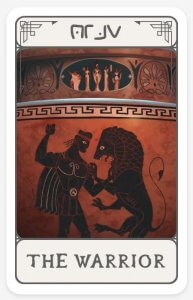
It’s the man with a plan. Armed with a particular set of skills and the sheer force of their will, the hero will conquer the enemy and carry the day. This incredibly competent character will usually suffer a crisis of confidence at their lowest ebb — which they must overcome if they are to rise once more.
Strengths: Courage, strength (physical or mental), and ability.
Weaknesses: Overconfidence, ego.
Desires: To save the day and prove their worth.
Examples: Hercules, Odysseus, Aragorn from Lord of the Rings, and any Tom Cruise character.
2. The Child

Innocence is lost and children grow up: that’s entropy, and the only way this story goes. This archetype usually follows a young or naive character who sees the world through rose-tinted glasses — until reality comes knocking. That’s not to say that they end the story as jaded husks of their former selves — but they will learn a lesson or two about the world around them.
Strengths: Optimism, enthusiasm, imagination.
Weaknesses: Naivete, physical powerlessness.
Desires: To be happy (or happier).
Examples: Scout from To Kill a Mockingbird, Dorothy from The Wizard of Oz.
3. The Orphan
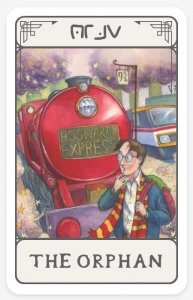
The dream of being plucked from obscurity and elevated to prominence is a fantasy nearly everybody’s had at some point in their lives. That’s one of the reasons why Orphans are in such high demand as protagonists: they’ve got the most to gain from good fortune. They don’t need to be literal orphans, but in most cases, these characters are in search of a new “family.”
Strengths: Survival instinct, empathy, perseverance.
Weaknesses: Lack of confidence, willingness to please others.
Desires: To thrive and connect with others.
Examples: Harry Potter, Oliver Twist, Quasimodo in The Hunchback of Notre Dame.
4. The Creator
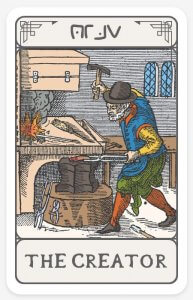
For this kind of character, nothing is more important than the need to make something. In many stories, a creator will be an artist of some sort — willing to sacrifice their own well-being and relationships in the pursuit of this greater abstract goal. Because of their single-minded vision, creators often pay the greatest personal price.
Strengths: Creativity, drive, the ability to execute their vision.
Weaknesses: Personal sacrifice, perfectionism, egotism.
Desires: To create something of value to cement their legacy.
Examples: Remy from Ratatouille, Alexander Hamilton from Hamilton, Dr Jekyll from Dr Jekyll and Mr Hyde, Willy Wonka.
5. The Caregiver

Selflessness is the defining attribute of this character type. They might be a mother, father, wife, husband, or best friend — whoever they are, they’ll do anything to protect their child, ward, lover, or best bud. It’s quite rare for the caregiver to take center stage but such is the nature of one so selfless.
Strengths: Generosity, selflessness.
Weaknesses: Also selflessness: they are open to exploitation.
Desires: To protect and help others.
Examples: Eva in We Need to Talk About Kevin, Samwise from The Lord of the Rings, Mary Poppins.
🎵
Tell us about your book, and we'll give you a writing playlist
It'll only take a minute!
6. The Mentor/Sage
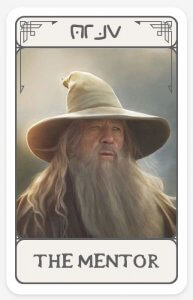
Our protagonist might encounter some sort of mentor character, who will prepare them for the trials ahead. Sometimes this mentor is a parent. Other times, it might be a wizard or a suburban Karate teacher. Whatever form they take, they are there to guide our hero through the unknown.
The original purpose of this archetype was probably to convince younger generations of people to listen to their older, frailer tribe-mates.
Strengths: Wisdom, experience.
Weaknesses: Caution, inability to act.
Desires: To help the hero push past their boundaries and make sense of the world.
Examples: Magwitch in Great Expectations, Mr. Miyagi in The Karate Kid, Obi-Wan Kenobi in Star Wars.
7. The Joker

The fool, the clown, the jester, the hedonist, the laid-back stoner. This archetype has many faces, but if you see any character say something like, “Relax, dude” or, “Chill out,” then they’re probably the Joker in the pack. In myth, Jokers often act as a cautionary tale, warning people not to waste too much time in pursuit of pleasure. In modern culture, they’re often the comic relief.
Strengths: Joyousness, likeability.
Weaknesses: Frivolousness.
Desires: To live for today and be happy.
Examples: Timon and Pumbaa from The Lion King, Tigger from Winnie the Pooh, Stifler from American Pie.
8. The Magician
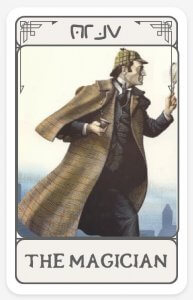
The aspiring masters of the universe. Driven by their inquisitive nature, Magicians seek enlightenment — but unlike the sages and mentors, they also want to impose their will on the world around them. These classic fantasy characters can easily impress others: even if they are not literal wizards, their abilities are beyond the comprehension of mere mortals.
Strengths: Knowledge, power.
Weaknesses: Hubris.
Desires: To create order from chaos and bend the world to their will.
Examples: Sherlock Holmes, Dr Strange, Jay Gatsby from The Great Gatsby.
9. The Ruler
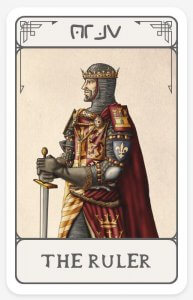
Heavy hangs the head that wears the crown. Any society needs a leader, but how does that leader cope with absolute power? What will they do to maintain control and order? Do they rule with kindness and compassion or with an iron fist?
Strengths: Leadership, charisma, power.
Weaknesses: Inability to delegate, suspicion.
Desires: Control, to hold on to power.
Examples: Macbeth, Miranda Priestly from The Devil Wears Prada, Mr Burns from The Simpsons.
10. The Rebel
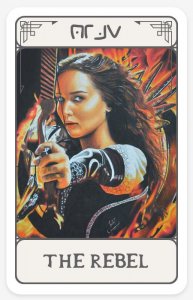
A rebel is mad as hell and they’re not going to take it anymore. In the face of an unjust society, they are the ones with the will to overthrow the status quo. A rebel might be a charismatic leader, but they also might work in secret. They can be a freedom fighter, or rock musician, or the girl in chemistry class with the purple highlights in her hair.
Strengths: Resourcefulness, perseverance.
Weaknesses: Small in power, status, and resources.
Desires: To change the world around them.
Examples: Katniss Everdeen from The Hunger Games, Ferris Bueller, Hester Prynne in The Scarlet Letter.
11. The Lover
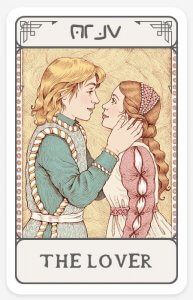
Just like Meatloaf, this archetype will do anything for love. They might be a prince, a pauper, a pop star or Sandra from HR — whoever they are, they have love in their lives and it makes them more driven and devoted than you can imagine. The downside of this passion is that they’re often willing to sacrifice everything for the ones they love — which can be a one-way ticket to tragedy.
Strengths: Devotion, passion.
Weaknesses: Willingness to sacrifice identity, life, and liberty.
Desires: Being in a relationship.
Examples: Edward from Twilight, Romeo and Juliet.
12. The Seductress
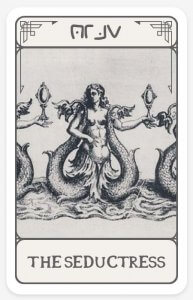
“I’ll give you whatever you want,” is the refrain of the seductress — a character that comes in all shapes, sizes, and genders. They might offer power, sex, love, money, or influence but remember, these things always come with strings attached. If a seductress is involved, the moral of the tale is almost always, “Don’t believe anything that’s too good to be true.”
Strengths: Allure, charisma, lack of morals.
Weaknesses: The emptiness of their promises.
Desires: Control.
Examples: Mephistopheles in Faust, Delilah from Samson and Delilah, 90% of the female characters in The Odyssey.
Subverting archetypal expectations
In Christopher Brooker’s The Seven Basic Plots, the author casts his Jungian eye on the nature of storytelling and mythmaking. The basic gist is that there really aren’t that many unique stories to tell: most plots center on some form of ‘quest and return’ where the protagonist seeks something and returns ‘home’ with it.
Following on from that, it stands to reason that there are also limited character arcs a story can follow. With that in mind, how can an author make an archetype fresh?
The answer, most likely, lies in the specifics.
As the writer and humorist John Hodgman will often say, “Specificity is the soul of narrative.” Stories resonate when they are universal (enter: archetypes), but they engage people by avoiding vagueness like a virus.

FREE RESOURCE
Reedsy’s Character Questionnaire
40 questions to help you develop memorable characters.
The plot of Stephanie Meyer’s Twilight is nearly identical to Romeo and Juliet. Edward and Bella belong to the same archetype as those star-crossed lovers of Verona. However, despite the vast similarities in the sequence of events of these stories, the important differences lie in the specifics: the way Meyer's characters speak, the Pacific Northwest setting, the fantastical conflict between vampires and werewolves. While the book follows a similar narrative arc as that of Romeo and Juliet, its fans certainly wouldn’t call it a predictable retread of Shakespeare’s renowned play.
For authors, character archetypes are a useful concept to understand — if only to save you from tying yourself in knots, trying to create stories and characters completely unlike anything that’s come before. Every story has already been told, so focus on what matters most to readers: creating rich, specific worlds populated by people living specific lives, whose struggles are so grounded in realistic human behavior that their stories become universal — no matter where the reader is from.
What other character archetypes have we missed from this list? Drop them in the comments below along with your favorite example!












10 responses
Lucrezia says:
13/08/2018 – 13:53
Some numbers. There are 12 archetypes, for a total of 37 examples. Of these examples, only 10 are women (about 28%). Only 6 of the 12 archetypes have at least a female example (50%), with a concentration on child, caregiver (surprise), seductress (even more surprise) and rebel (that was actually unexpected). On the other side, there is only 1 archetype without a male example, out of 12. Of course the more "authoritative" archetypes - warrior, mentor, creator, magician - are a boy only preserve. I do not mean this as a critique to the author of the post, more as general observation about how skewed literature or movies, even pretty contemporary ones, can be.
↪️ Al McDowall replied:
27/10/2018 – 09:43
"...more as general observation about how skewed literature or movies, even pretty contemporary ones, can be." Sadly, I think it's more an observation on the effect that skewing can have on our perceptions. It's a good point to bring up, I'm glad you clarified your motivation as well (though some people will still react negatively). We ALL have a long way to go and a lot of work to do!
↪️ Tessa replied:
10/11/2018 – 21:48
That's what I'm struggling with in interpreting the article. Interestingly enough, one of the things that characterizes a rebel archetype is their lower status; This makes the fact that the only woman example that doesn't fall into stereotypical gender roles stand out as an overwhelming example of how women do have a long history of being basically denied roles of power, unless of course, they act like a man to do so. I'm reading this article for completely different reasons than most people here who are likely authors; I think it would be wise for authors to consider creating female roles for the archetypes typically seen as being oriented towards males. This is honestly what the world is desiring... And why movies like Wonder Woman are such a success!
↪️ Samantha replied:
23/02/2019 – 22:46
You should see 16 archetypes explained by studiobinder; it's nauseating. They actually separate them as male and female oriented.
↪️ Bob replied:
24/09/2019 – 13:40
The care giver is a male from the lord of the rings
shantkiraz says:
08/05/2019 – 12:28
How is the "Ruler" different than the "Leader" from this article? https://www.studiobinder.com/blog/character-archetypes/
↪️ Reedsy replied:
08/05/2019 – 12:29
It's all about power, I guess. The ruler will struggle to maintain power, while a leader will usually inspire from the ranks — and will often start from a lower position of status than a ruler.
↪️ Neko replied:
09/07/2019 – 01:55
Rulers have a lot of power such as a king(eg. King Arthur) whereas a leader can be anyone as long as they give orders and assist those that he leads(eg. Robin Hood)